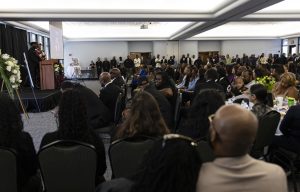More diversity needed in Disney
November 8, 2012
Disney princess checklist: Caucasian princess…check, a Native American princess…check and Latina princess….che…
It was recently reported that Disney had created the first film to feature a Latina princess, “Sofia the First: Once upon a Princess,” but days later a co-executive producer from Disney said Sofia was of “mixed heritage” and not Latina as it was first advertised.
Because Sofia’s physical appearance did not meet audience expectations and for retracting their statement, Disney received heavy criticism.
The criticism should be no surprise since Disney has created princesses representing other minorities. It is only fitting Disney should produce a Latina princess whose appearance comes close to individuals from Latin America, comprised of Mexico, Central America and South American countries, and with this character further promote diversity to children.
Many children grow up idolizing and mimicking a cartoon character or superhero. As a child, I wanted to kick butt like Kimberly, the pink ranger from the “Mighty Morphin’ Power Rangers” and have a happily ever after life with the prince of my dreams like Princess Aurora from “Sleeping Beauty.”
Although these characters are make believe, children identify with characters on a much deeper level.
For instance, certain traits of the character might relate to that of a child’s own life or even the actual location. We see the latter, with the setting of “Mulan” in China, Disney’s “The Emperor’s New Groove” set in Peru and “The Princess and the Frog” set in New Orleans.
Disney can do the same with a Latina princess. The challenge is picking a country that comprises the ethnic majority in Latin America because some South American countries like Argentina are more European than say Peru, which is mostly populated by Indigenous Native American.
Not only that, but Disney should understand that just because individuals in a country speak Spanish doesn’t make it Latin country. For example, people of Equatorial Guinea in Africa speak Spanish, but the country is not considered Latin.
Time after time, Disney has proven their children’s shows can be more than just entertainment because learning opportunities come about. Take Disney’s cartoon show “Handy Manny” which features Manny, a handyman, who speaks Spanish and English and invites the audience to help him fix things around the town he resides.
Disney tries to promote diversity with cartoons like “Doc McStuffins” which depicts an African-American girl who can communicate with and heal toys. “Little Einsteins” features an African-American and an Asian character to promote diversity. These three cartoons do not make up for the overwhelming number of cartoon shows and princess characters that are not ethnically diverse.
Because of the lack of ethnic diversity, Disney brings about the question of exclusion. It has created characters that are African-American and even Middle Eastern with princess Jasmine from “Aladdin,” but other groups are being left out. Living in the U.S, children are in constant communication and interaction with individuals outside of our ethnicity.
Program coordinator for the Multi-Cultural Center at Sacramento State Jessica Castellon said children should see a princess character similar to them.
“Children are going to look for a doll that looks like them and if every doll is out there but none of them look like them, they might feel symbolically excluded,” Castellon said.
Right now, diversity is scattered through Disney’s cable channel and sometimes it is not well portrayed. It can even become very stereotypical or Eurocentric. For example, in “Princess and the Frog,” Tiana, the main female character of African-American dissent, marries a prince from Europe.
“If they [Disney] weren’t so fixed in just Europeans,” said Elvia Ramirez, assistant professor of Ethnic studies at Sacramento State. “Then their characters [could] reflect the natural diversity that exists in the real world.”
Ethnic exclusion is one of the main points Disney needs to work on. In order to create a well-rounded Latina character, creators need to look through the Latina perspective. They should travel to get the essence of a town in Mexico, Central America or South American countries, and translate that feeling through animation. They need to know the difference of between Latinos and Hispanics.
Disney has taken baby steps when it comes to diversifying its characters, but now it has to go full throttle.
Elizabeth can be reached at: [email protected]
























































































































